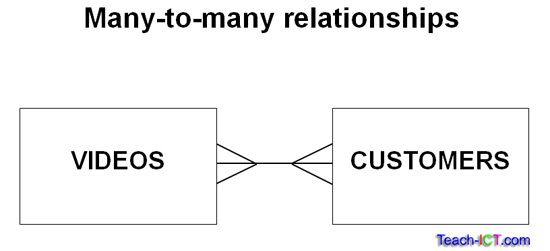In this topic the first thing one needs to understand is that a Database is an organised collection of data. It functions as a storage, to organize and control data in an organisation. A database has the following components
Data item: which is Field in data processing and it is a piece of information and
Schema: which describes the organization of data and relationships within the database.
The architecture of a modern database consists of actual database (contents), hardware to process and store the data, software to manipulate the contents and people to administer the access, control and modification of data.
DBMS; This is a database program/ software package used for its manipulation. for example Microsoft access oracle, mySQL and clipper.
DBMS has the following features and functions;
Allow users to create new databases .This is by establishing the logical relationships among different data elements in a database and also defines schemas and subschemas using the DDL
Give users the ability to query& modify the data using (query language or data manipulation).
Query- performs the function of manipulation and processing of the data stored in the database is done using the DML.
It provides information to the decision makers that they need to make important decisions. This information is provided by querying the database using SQL.
Components of DBMS
Field; which is a specific piece of data.
Record; a group of related fields that describes a person, place, thing or transaction.
Table; which is a collection of records for a single subject such as Students, Products, or Sales.
Key field; this is a field that contains unique information for each record, such as student ID for a student.
Relational database; these are Multiple tables that are linked together to address a business process such as managing timetable, courses, and students.
Objects; they are The parts of an Access database that help you view, edit, manage, and analyze the data: tables, queries, forms and reports.

RELATIONSHIP/SCHEMA;
As mentioned above, it describes relationship between entities and works by matching data in key columns. The relationship can be shown inform of entity relationship diagram (ERD) which exists in 3 forms;
One to One Relationship
In a one-to-one relationship, each row in one database table is linked to 1 and only 1 other row in another table.

One to Many Relationship; each row in the related to table can be related to many rows in the relating table.


RELATIONSHIP/SCHEMA;
As mentioned above, it describes relationship between entities and works by matching data in key columns. The relationship can be shown inform of entity relationship diagram (ERD) which exists in 3 forms;
One to One Relationship
In a one-to-one relationship, each row in one database table is linked to 1 and only 1 other row in another table.
One to Many Relationship; each row in the related to table can be related to many rows in the relating table.
Many to Many Relationship; one or more rows in a table can be related to many rows in another table.

The users of DBMS are the end users, application programmers and database administrators. It also has several models which include the structure, characteristic, description and organisation.
Types of Database Models
Hierarchical database (contains levels or segments like the organizational chart).
Network database (data are represented by records suing links among them).
Relational database (data is organised in the form of rows and columns as in a table).
Object-relational database.
The method to be used by a given company depends on the following factors;
The organization’s primary goals and requirements.
The volume of transaction/information in organization.
No comments:
Post a Comment